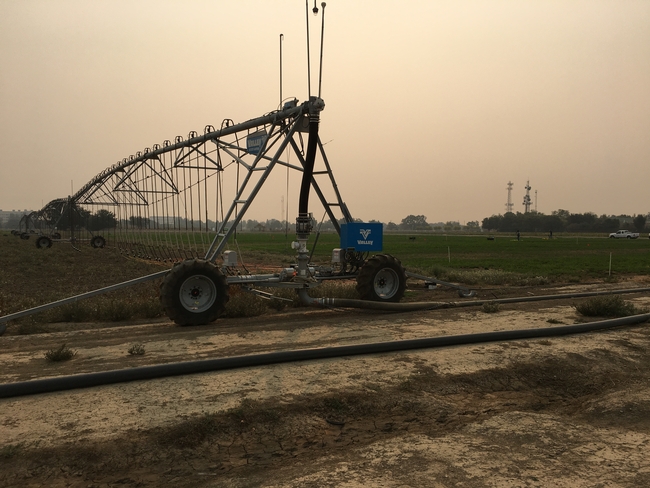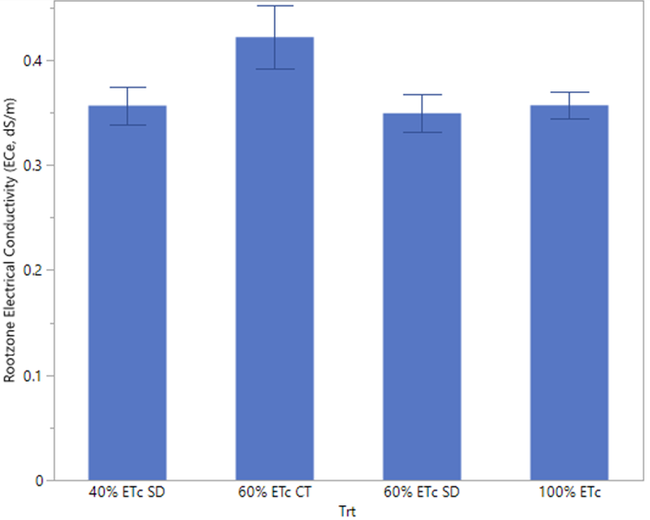Over the last few years, I have been working on a project to characterize a suite of soil health properties in alfalfa receiving full and deficit irrigation. Soil health has been described as the ability of soil to function and is characterized by biological, chemical, and physical soil properties that are sensitive to changes in management. The idea for this project developed after the 2012-2015 drought when water shortages and regulatory curtailments meant that growers had to make tough decisions on how to apply scarce water resources. Some growers opted to cut irrigation to alfalfa since it is a deep-rooted crop that can scavenge water and nutrients from the soil profile. (See this recent blog post by UC Alfalfa and Forage Specialist Dan Putnam, and Farm Advisor Rachael Long on the resiliency of alfalfa during drought.) I had a hunch, however, that while alfalfa may be adapted to survive drought conditions, soil health properties might be negatively impacted because water is essential to life in the soil, facilitates nutrient movement and availability, and influences soil physical characteristics, among other things. Fortunate for me, there was a research trial at UC Davis where I could test this idea.

I view alfalfa as a model crop for studying soil health under restricted water conditions because practices like crop rotation and tillage do not occur over the four or more years of an alfalfa stand. Therefore, those practices would not confound the results. From this experiment, we are learning how imposing varying levels of deficit at different stages of the cropping season impact soil properties, which will help us optimize deficit irrigation strategies for alfalfa. Additionally, the deficit treatments serve as a proxy for drought and could potentially demonstrate how prioritization of water uses during drought may impact soil conservation outcomes.
Data analysis is ongoing, but preliminary results suggest that soil health may not be resilient under deficit irrigation or drought, even if alfalfa is. When the trial began in Spring 2019, there were no differences in rootzone salinity among treatments, which averaged 0.41 dS/m. After two cropping seasons where deficits were imposed, the 60 percent ETc treatment with the water cut-off toward the end of the season (CT) resulted in significantly higher rootzone salinity down to the 36-inch depth (Figure 2). The salinity in that treatment was higher than even the 40 percent ETc treatment that had the sustained deficit (SD) throughout the entire season. In other words, it appears that the timing of the deficit is more important than the amount of deficit, and applying water throughout the season – even if the amount is severely reduced – appears to mitigate salinity build-up in the rootzone. Of note, salinity is not high enough to be problematic at this site. The overall ECe of the soil is low, and water quality is generally good at this location. I would expect, however, that in locations where soil and/or water has higher salinity to begin with, then deficit irrigation that includes a water cut-off could be problematic.
There will be a lot more information to come about this project in the near future, but the salinity information seemed timely to share given our current water year. In addition to Dan, Isaya, and Umair, I want to acknowledge Daniel Geisseler (UC Nutrient Management Specialist), Will Horwath (Professor of Soil Biogeochemistry), and graduate student Veronica Suarez Romero who have helped on soil nitrogen and carbon testing. I also want to acknowledge the South Delta Water Agency for financial support of the project.
